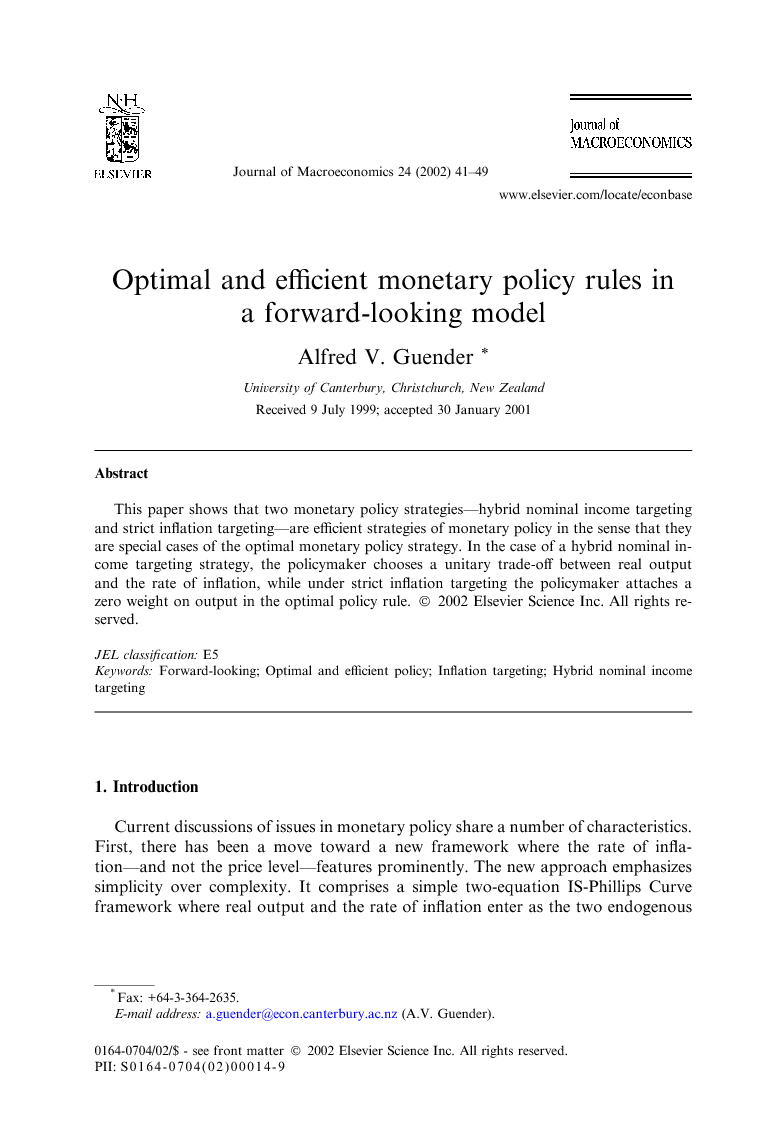ترجمه فارسی عنوان مقاله
قوانین سیاست های پولی بهینه و کارآمد در یک مدل دنباله ای رو به جلو
عنوان انگلیسی
Optimal and efficient monetary policy rules in a forward-looking model
| کد مقاله | سال انتشار | تعداد صفحات مقاله انگلیسی |
|---|---|---|
| 24745 | 2002 | 9 صفحه PDF |
منبع

Publisher : Elsevier - Science Direct (الزویر - ساینس دایرکت)
Journal : Journal of Macroeconomics, Volume 24, Issue 1, March 2002, Pages 41–49
ترجمه کلمات کلیدی
دنباله ای رو به جلو -
سیاست بهینه و کارآمد -
هدف قرار دادن تورم -
هدف قرار دادن هیبریدی درآمد اسمی
کلمات کلیدی انگلیسی
Forward-looking,
Optimal and efficient policy,
Inflation targeting,
Hybrid nominal income targeting

